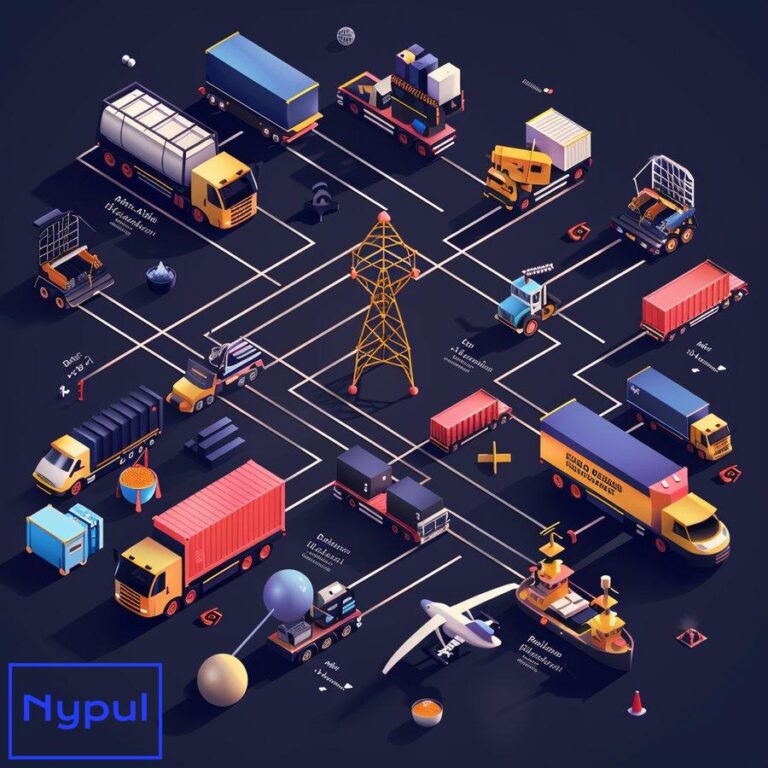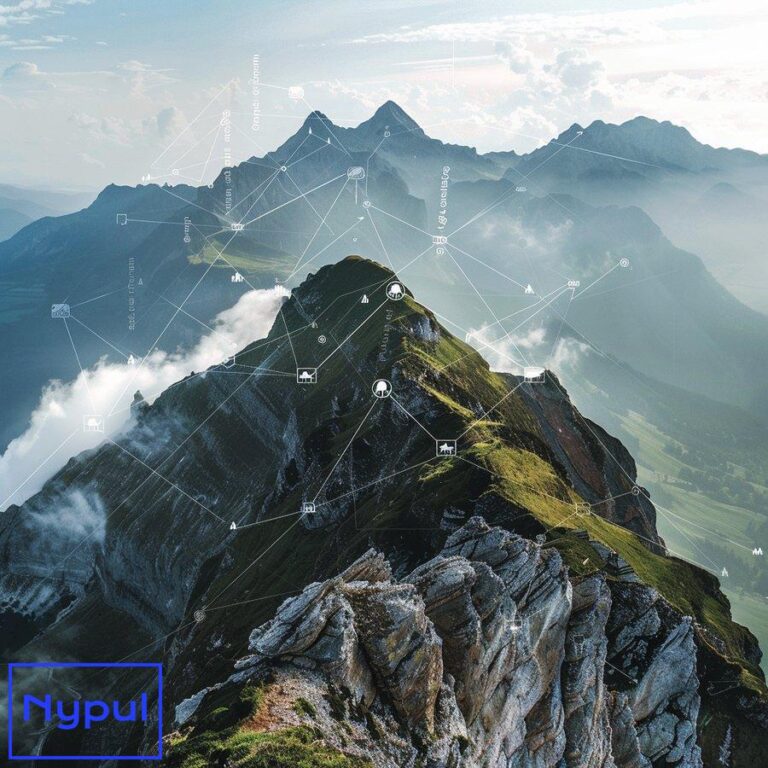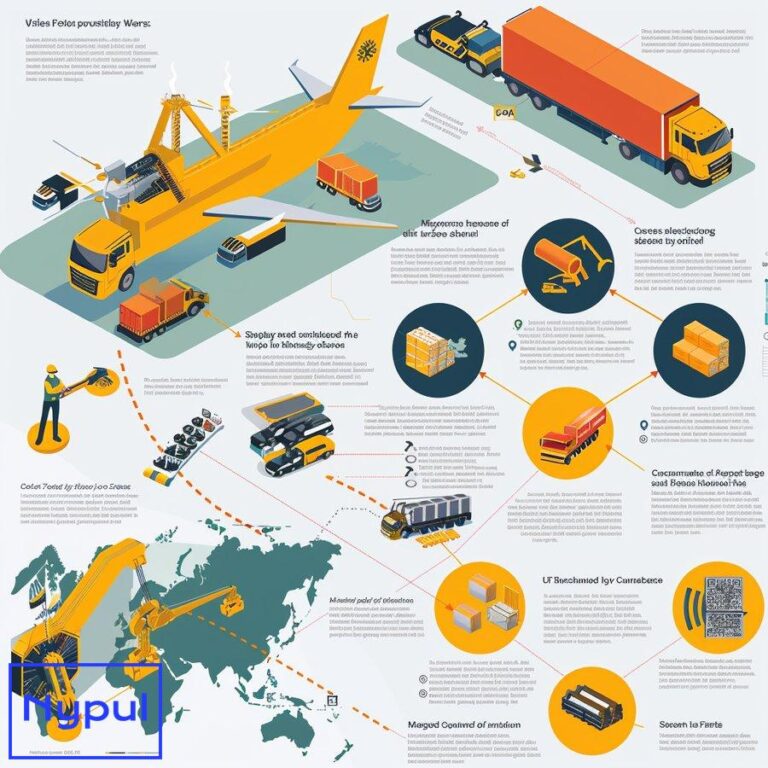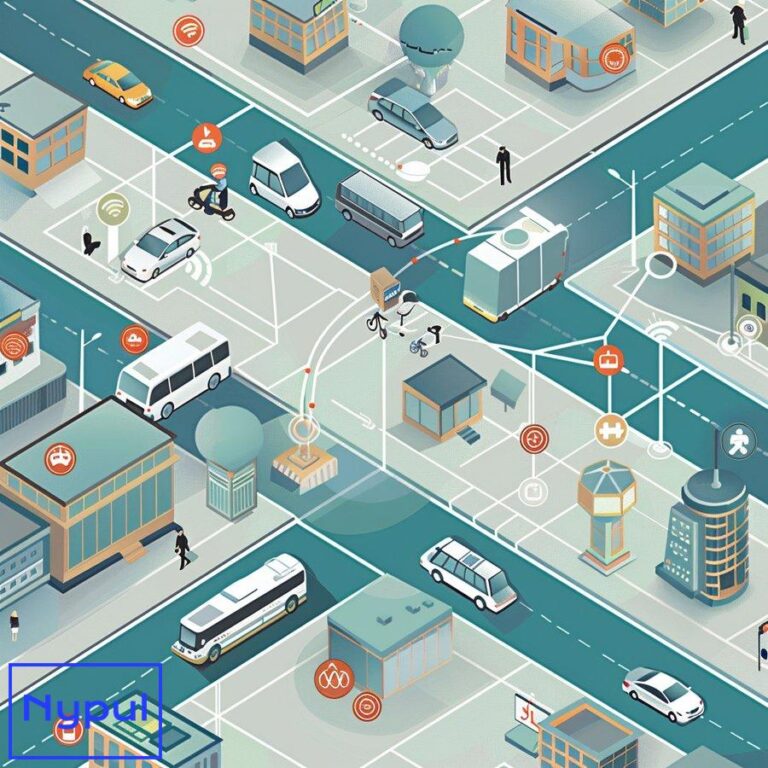What Is Real-Time Visibility in Transportation
What is real-time visibility in transportation?

Real-time visibility in transportation refers to the ability to track and monitor the movement of goods, vehicles, and other assets in real-time throughout the supply chain. This means having access to live, up-to-date information on the location, status, and condition of shipments as they move from origin to destination.
Real-time visibility provides a comprehensive view of the entire transportation process, enabling logistics professionals to make informed decisions and respond quickly to any issues or delays. By leveraging advanced technologies such as GPS tracking, IoT sensors, and cloud-based platforms, companies can gain unprecedented insight into their supply chain operations.
The importance of real-time visibility in today’s supply chains
In today’s fast-paced, globalized business environment, real-time visibility has become a critical component of effective supply chain management. With increasing customer expectations for faster delivery times and greater transparency, companies must be able to track and manage their shipments in real-time to remain competitive.
Real-time visibility enables companies to:
- Monitor shipments in transit and identify potential delays or disruptions
- Optimize routes and schedules to improve efficiency and reduce costs
- Communicate proactively with customers and provide accurate ETAs
- Ensure compliance with regulations and quality standards
- Respond quickly to unexpected events and mitigate risks
The evolution of real-time visibility technology
The concept of real-time visibility in transportation is not new, but the technologies that enable it have advanced significantly in recent years. Traditional track and trace methods relied on manual updates and periodic check-ins, which often resulted in outdated or incomplete information.
Today, real-time visibility solutions leverage a combination of GPS, RFID, IoT sensors, and mobile apps to provide continuous, automated tracking of shipments. These technologies collect data from multiple sources and transmit it to a centralized platform, where it can be analyzed and visualized in real-time.
Some of the key advancements in real-time visibility technology include:
- Increased accuracy and granularity of location data
- Ability to monitor temperature, humidity, shock, and other conditions
- Integration with transportation management systems (TMS) and other enterprise software
- Predictive analytics and machine learning capabilities
- User-friendly interfaces and mobile apps for easy access to data
How do technologies enable real-time visibility in logistics?
Real-time visibility in logistics is made possible by a combination of advanced technologies that work together to track, monitor, and analyze the movement of goods throughout the supply chain. These technologies include:
GPS tracking
GPS (Global Positioning System) is a satellite-based navigation system that provides accurate location data for vehicles, containers, and other assets. GPS tracking devices are installed on trucks, ships, and railcars to continuously transmit their position and speed to a central server.
GPS tracking enables logistics providers to:
- Monitor the real-time location and movement of shipments
- Optimize routes and schedules based on traffic, weather, and other factors
- Detect and respond to delays, diversions, or other issues
- Provide customers with accurate ETAs and shipment status updates
IoT sensors
Internet of Things (IoT) sensors are small, wireless devices that can be attached to individual packages, pallets, or containers to monitor various conditions during transit. These sensors can measure temperature, humidity, shock, light, and other parameters that can affect the quality and integrity of goods.
IoT sensors enable logistics providers to:
- Ensure that sensitive or perishable products are transported under optimal conditions
- Detect and prevent damage, spoilage, or theft of goods
- Comply with regulations and quality standards for specific industries (e.g., food, pharmaceuticals)
- Provide customers with detailed visibility into the condition of their shipments
Cloud-based platforms
Cloud-based platforms are software solutions that collect, store, and analyze data from multiple sources (e.g., GPS devices, IoT sensors, enterprise systems) in real-time. These platforms provide a centralized hub for logistics providers to manage and monitor their transportation operations.
Cloud-based platforms enable logistics providers to:
- Integrate data from various systems and devices into a single, unified view
- Access real-time visibility data from anywhere, on any device
- Collaborate and share information with partners, customers, and other stakeholders
- Perform advanced analytics and reporting to identify trends, patterns, and opportunities for improvement
Artificial intelligence and machine learning
Artificial intelligence (AI) and machine learning (ML) are technologies that enable logistics providers to automate and optimize various aspects of their operations. AI and ML algorithms can analyze vast amounts of data from multiple sources to identify patterns, predict outcomes, and recommend actions.
AI and ML enable logistics providers to:
- Predict and prevent delays, disruptions, or other issues before they occur
- Optimize routes, schedules, and resource allocation based on real-time data and historical patterns
- Automate manual processes such as dispatch, billing, and customer service
- Continuously learn and improve over time based on new data and feedback
| Technology | Key Benefits |
|---|---|
| GPS tracking | Real-time location and movement tracking, route optimization, ETA accuracy |
| IoT sensors | Condition monitoring, quality assurance, regulatory compliance |
| Cloud-based platforms | Data integration, accessibility, collaboration, analytics |
| AI and machine learning | Predictive insights, process automation, continuous improvement |
What are the key benefits of implementing real-time visibility?

Implementing real-time visibility in transportation and logistics operations can provide numerous benefits for companies, including:
Improved operational efficiency
Real-time visibility enables logistics providers to optimize their operations by providing accurate, up-to-date data on the location, status, and condition of shipments. This allows them to:
- Identify and eliminate bottlenecks, delays, and other inefficiencies in the supply chain
- Optimize routes and schedules based on real-time traffic, weather, and other conditions
- Reduce dwell times, detention costs, and other unnecessary expenses
- Maximize asset utilization and productivity of drivers, vehicles, and other resources
Enhanced customer service
Real-time visibility empowers logistics providers to provide better service to their customers by giving them timely, accurate, and transparent information about their shipments. This includes:
- Proactive communication and alerts about shipment status, delays, or other issues
- Accurate and reliable ETAs for delivery or pickup
- Detailed visibility into the condition and quality of goods during transit
- Self-service portals or mobile apps for customers to track their own shipments
Increased supply chain resilience
Real-time visibility helps logistics providers to anticipate, mitigate, and respond to disruptions or exceptions in the supply chain more effectively. By having real-time data and insights, they can:
- Identify potential risks or issues before they escalate into major problems
- Develop contingency plans and alternative routes or modes of transportation
- Collaborate with partners and stakeholders to coordinate response efforts
- Minimize the impact of disruptions on customers and overall business operations
Competitive advantage
Real-time visibility can give logistics providers a significant competitive advantage in the market by enabling them to differentiate their services and meet the evolving needs of customers. With real-time visibility, they can:
- Offer value-added services such as proactive alerts, customized reporting, or predictive analytics
- Attract and retain customers who prioritize transparency, reliability, and innovation in their logistics partners
- Expand into new markets or industries that require high levels of visibility and control over the supply chain
- Continuously improve and adapt their operations based on real-time data and feedback
| Benefit | Description |
|---|---|
| Operational efficiency | Optimize routes, schedules, and resources based on real-time data |
| Customer service | Provide timely, accurate, and transparent information to customers |
| Supply chain resilience | Anticipate, mitigate, and respond to disruptions more effectively |
| Competitive advantage | Differentiate services and meet evolving customer needs |
What challenges do companies face when adopting real-time visibility solutions?
While real-time visibility offers many benefits for transportation and logistics operations, companies may face several challenges when adopting these solutions, including:

Data integration and interoperability
One of the biggest challenges in implementing real-time visibility is integrating data from multiple sources and systems, such as GPS devices, IoT sensors, enterprise software, and third-party providers. These systems often have different data formats, protocols, and interfaces, which can make it difficult to create a seamless, end-to-end visibility platform.
To overcome this challenge, companies need to:
- Develop a clear data integration strategy and roadmap
- Invest in modern, flexible, and scalable integration technologies (e.g., APIs, EDI, blockchain)
- Collaborate with partners and vendors to establish common data standards and practices
- Continuously monitor and maintain data quality, security, and governance
Change management and user adoption
Implementing real-time visibility often requires significant changes to existing processes, roles, and responsibilities within the organization. This can lead to resistance or lack of adoption among employees, partners, and customers who are used to traditional ways of working.
To address this challenge, companies need to:
- Clearly communicate the benefits and value of real-time visibility to all stakeholders
- Provide training, support, and incentives to help users adapt to new tools and processes
- Involve key stakeholders in the design and implementation of the visibility solution
- Continuously gather feedback and make improvements based on user needs and preferences
Cost and ROI justification
Implementing real-time visibility can require significant upfront investments in technology, infrastructure, and resources. This can be a barrier for companies that are looking to justify the cost and demonstrate a clear return on investment (ROI) for the solution.
To build a strong business case for real-time visibility, companies need to:
- Identify and quantify the specific benefits and value drivers for their organization (e.g., cost savings, revenue growth, customer satisfaction)
- Develop realistic cost estimates and timelines for the implementation and ongoing maintenance of the solution
- Establish clear metrics and KPIs to measure the success and ROI of the visibility initiative
- Continuously monitor and communicate the progress and results of the initiative to stakeholders
Data privacy and security
Real-time visibility involves collecting, storing, and sharing sensitive data about shipments, customers, and partners across multiple systems and organizations. This can create risks and challenges related to data privacy, security, and compliance with regulations such as GDPR, CCPA, or HIPAA.
To mitigate these risks, companies need to:
- Develop and enforce strong data privacy and security policies and procedures
- Implement technical controls such as encryption, access controls, and data loss prevention
- Conduct regular audits and assessments to identify and address vulnerabilities or gaps
- Educate and train employees and partners on data privacy and security best practices
| Challenge | Key Considerations |
|---|---|
| Data integration | Develop integration strategy, invest in modern technologies, collaborate with partners |
| Change management | Communicate benefits, provide training and support, involve stakeholders, gather feedback |
| Cost and ROI | Identify value drivers, develop cost estimates, establish metrics, communicate progress |
| Data privacy and security | Enforce policies, implement controls, conduct audits, educate and train users |
How is real-time visibility applied across different transportation modes?
Real-time visibility can be applied across various transportation modes, each with its own unique characteristics, requirements, and technologies. Some of the most common modes include:
Truckload (TL) and Less-than-Truckload (LTL)

Truckload and less-than-truckload are the most common modes of transportation for goods in many countries. Real-time visibility in these modes typically involves:
- GPS tracking of trucks and trailers to monitor location, speed, and ETA
- IoT sensors to monitor temperature, humidity, shock, and other conditions inside the trailer
- Mobile apps for drivers to communicate status updates, delays, or issues
- Integration with transportation management systems (TMS) for end-to-end visibility and control
Ocean and air freight
Ocean and air freight are critical modes for global supply chains, involving the movement of goods across long distances and multiple countries. Real-time visibility in these modes may include:
- GPS tracking of containers, pallets, or individual packages
- IoT sensors to monitor temperature, humidity, shock, and other conditions during transit
- Integration with carrier booking and tracking systems for end-to-end visibility
- Compliance with international regulations and standards for data sharing and security
Rail and intermodal
Rail and intermodal transportation involve the movement of goods using a combination of trains, trucks, and other modes. Real-time visibility in these modes may involve:
- GPS tracking of railcars, containers, or trailers
- IoT sensors to monitor temperature, humidity, shock, and other conditions during transit
- Integration with rail carrier and intermodal terminal systems for end-to-end visibility
- Coordination and handoffs between multiple parties and modes
Last-mile delivery
Last-mile delivery refers to the final leg of the transportation journey, typically from a distribution center or hub to the end customer. Real-time visibility in this mode is critical for meeting customer expectations and may include:
- GPS tracking of delivery vehicles and packages
- Mobile apps for drivers to optimize routes, capture proof of delivery, and communicate with customers
- Customer portals or apps to track deliveries, receive alerts, and provide feedback
- Integration with order management and customer service systems for end-to-end visibility
| Mode | Key Visibility Requirements |
|---|---|
| TL/LTL | GPS tracking of trucks and trailers, IoT sensors for condition monitoring, mobile apps for drivers |
| Ocean/Air | GPS tracking of containers and packages, IoT sensors for condition monitoring, compliance with international regulations |
| Rail/Intermodal | GPS tracking of railcars and containers, IoT sensors for condition monitoring, coordination between multiple parties and modes |
| Last-Mile | GPS tracking of vehicles and packages, mobile apps for drivers and customers, integration with order management and customer service |
What factors should be considered when choosing a real-time visibility solution?
When choosing a real-time visibility solution for transportation and logistics operations, companies should consider several key factors to ensure that the solution meets their specific needs and requirements. These factors include:
Functionality and capabilities
The first factor to consider is the specific functionality and capabilities that the visibility solution offers. This may include:
- Real-time tracking and monitoring of shipments, assets, and resources
- Integration with various data sources and systems (e.g., GPS, IoT, TMS, ERP)
- Predictive analytics and machine learning capabilities
- Customizable alerts, notifications, and reporting
- Mobile apps and user-friendly interfaces for different stakeholders
Companies should carefully evaluate the features and capabilities of different solutions and map them to their specific business requirements and use cases.
Scalability and flexibility
Another important factor is the scalability and flexibility of the visibility solution. As companies grow and evolve, their visibility needs may change over time. The solution should be able to:
- Scale up or down based on the volume and complexity of shipments and data
- Adapt to changes in business processes, partners, or regulations
- Integrate with new data sources, systems, or technologies as they emerge
- Support multiple modes, regions, and use cases within a single platform
Companies should look for solutions that are built on modern, cloud-based architectures and offer flexible deployment and pricing options.
Vendor experience and support
The experience and support provided by the visibility solution vendor is also a critical factor to consider. Companies should evaluate:
- The vendor’s track record and expertise in the transportation and logistics industry
- The quality and responsiveness of the vendor’s customer support and service
- The vendor’s roadmap and vision for future product development and innovation
- The vendor’s ecosystem of partners and integrations with other relevant solutions
Companies should also look for vendors that offer comprehensive onboarding, training, and change management services to ensure successful adoption and use of the visibility solution.
Total cost of ownership
Finally, companies should carefully evaluate the total cost of ownership (TCO) of the visibility solution, including both upfront and ongoing costs. This may include:
- Software licensing or subscription fees
- Hardware and infrastructure costs (e.g., GPS devices, IoT sensors, servers)
- Integration and implementation costs
- Training and support costs
- Maintenance and upgrade costs
Companies should develop a comprehensive TCO model that captures all relevant costs and benefits over the expected lifecycle of the solution, and compare it against the expected ROI and value creation.
| Factor | Key Considerations |
|---|---|
| Functionality | Real-time tracking, data integration, predictive analytics, reporting |
| Scalability | Ability to scale up/down, adapt to changes, integrate with new sources |
| Vendor experience | Track record, customer support, roadmap, partner ecosystem |
| Total cost of ownership | Upfront and ongoing costs, ROI and value creation |
How can companies measure the ROI of real-time visibility implementations?
Measuring the return on investment (ROI) of real-time visibility implementations is critical for companies to justify the costs and demonstrate the value of these solutions. To calculate the ROI, companies need to identify and quantify the specific benefits and costs associated with the visibility implementation.
Identifying and quantifying benefits
The first step in measuring ROI is to identify and quantify the specific benefits that the visibility solution is expected to deliver. These may include:
- Cost savings from reduced transportation costs, inventory carrying costs, or labor costs
- Revenue growth from## What factors should be considered when choosing a real-time visibility solution?
Ease of use and user experience
The usability and user experience of the visibility solution is another important consideration. The solution should provide intuitive, user-friendly interfaces for different types of users, such as:
- Dispatchers and transportation planners who need to monitor and manage shipments in real-time
- Drivers who need to access routing instructions, capture proof of delivery, and communicate status updates
- Customers who want to track their orders and receive proactive alerts and notifications
The solution should also offer mobile apps and web portals that are optimized for different devices and operating systems, and provide a consistent experience across all touchpoints.
| Factor | Key Considerations |
|---|---|
| Ease of use | Intuitive interfaces, mobile apps, consistent user experience |
By carefully evaluating these key factors – functionality, scalability, vendor experience, total cost of ownership, and ease of use – companies can select a real-time visibility solution that best meets their specific needs and delivers maximum value to their transportation and logistics operations. Implementing the right visibility solution can help companies gain a competitive edge by improving efficiency, customer service, and supply chain resilience in today’s dynamic and demanding business environment.






